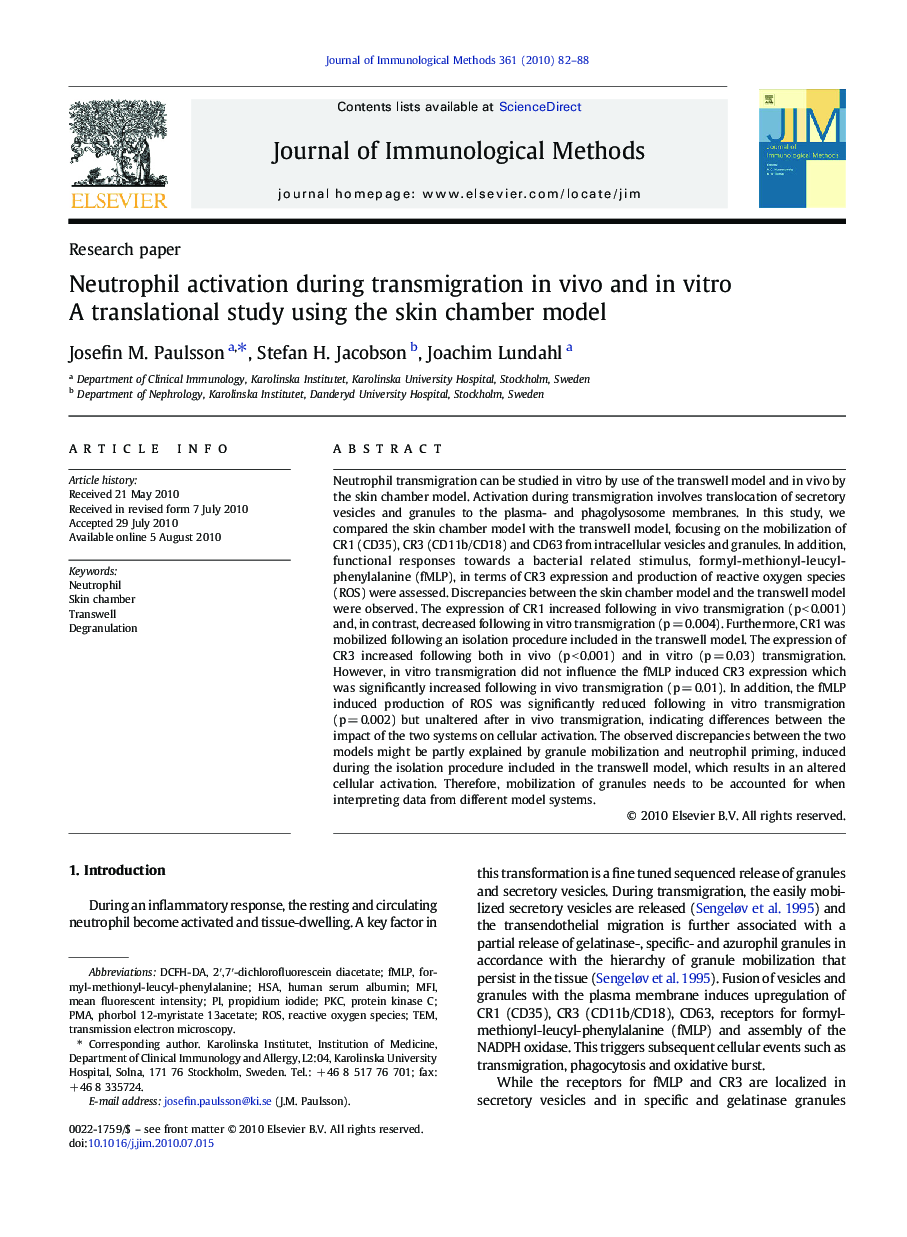| Article ID | Journal | Published Year | Pages | File Type |
|---|---|---|---|---|
| 2088546 | Journal of Immunological Methods | 2010 | 7 Pages |
Neutrophil transmigration can be studied in vitro by use of the transwell model and in vivo by the skin chamber model. Activation during transmigration involves translocation of secretory vesicles and granules to the plasma- and phagolysosome membranes. In this study, we compared the skin chamber model with the transwell model, focusing on the mobilization of CR1 (CD35), CR3 (CD11b/CD18) and CD63 from intracellular vesicles and granules. In addition, functional responses towards a bacterial related stimulus, formyl-methionyl-leucyl-phenylalanine (fMLP), in terms of CR3 expression and production of reactive oxygen species (ROS) were assessed. Discrepancies between the skin chamber model and the transwell model were observed. The expression of CR1 increased following in vivo transmigration (p < 0.001) and, in contrast, decreased following in vitro transmigration (p = 0.004). Furthermore, CR1 was mobilized following an isolation procedure included in the transwell model. The expression of CR3 increased following both in vivo (p < 0.001) and in vitro (p = 0.03) transmigration. However, in vitro transmigration did not influence the fMLP induced CR3 expression which was significantly increased following in vivo transmigration (p = 0.01). In addition, the fMLP induced production of ROS was significantly reduced following in vitro transmigration (p = 0.002) but unaltered after in vivo transmigration, indicating differences between the impact of the two systems on cellular activation. The observed discrepancies between the two models might be partly explained by granule mobilization and neutrophil priming, induced during the isolation procedure included in the transwell model, which results in an altered cellular activation. Therefore, mobilization of granules needs to be accounted for when interpreting data from different model systems.
Research Highlights► The expression of CR3 increased following both in vivo and in vitro transmigration. ► In vivo and in vitro transmigrated neutrophils display different activation status. ► CR1 is mobilized following neutrophil density isolation.
